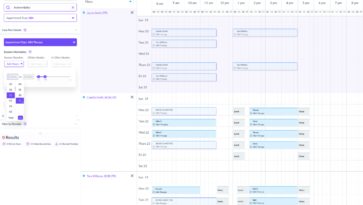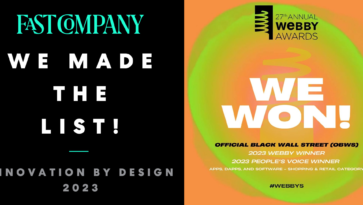In a world saturated with web and mobile apps, great user experience (UX) design remains scarce. Maybe that shouldn’t be a surprise. After all, optimizing digital experiences for human behavior is always a challenge.
As entrepreneurs or designers, it can be easy to fall into the trap of putting process over people. Designing in a black box, obsessively working to add functionalities or developing features without anchoring every decision to the needs of users are all common issues that come with this strategy. This tunnel vision often stems from having no clear product vision, too many stakeholders, or intense pressure to meet release deadlines.
To design products that solve problems instead of creating them, entrepreneurs and UX designers should keep a few tips top of mind.
Get Feedback First
Through a project’s life cycle, user experience designers need feedback from the people the product is meant to help. Surveys and market research will only go so far. You need to recruit and interview actual target users.
When you’re ready to build something, start with a prototype. This can be anything tangible that conveys the big idea behind your product. Tools like Invision and Proto.io let you create demos and get immediate audience feedback. Once you have a prototype, let users break it. Observe them testing out features. Ask questions. When they encounter a problem, you’ll know immediately, and you’ll be able to work on resolving it.
Don’t make assumptions about a user’s needs. Verify that the pain points your product addresses actually exist. When adding new features, confirm that these match up with people’s needs. Pushing out a bunch of notifications, for instance, may align with your business objectives, but those alerts might annoy users.
Plan Perfectly
Begin every project with the end in mind. Create a plan to get your product to market fast, and prioritize requirements, understanding that done is better than perfect. Make sure you have a launch plan. Know who your first users will be, and make it easy for them to share your product with your next wave of users.
Have a positioning plan. Understanding what differentiates your product can be a difference maker, and focusing on those elements during the design phase will lead to success.
Plan for your platform. If your goal is to release an app on Android and iOS, don’t expect the two versions to be identical. Think about the requirements of each operating system. Otherwise, you’ll have an app that probably doesn’t align with user expectations. As you plan, know when enough is enough. Cramming in additional features complicates the experience and can result in information overload for users, placing you back in the black box you’re climbing out of.
Develop a Product Persona
If your product were a person, whom would it resemble? Brainstorm the qualities your product would have, and make sure any product copy or messaging aligns with that persona. You’ll need to define a clear voice for your product to help users connect to it in a way that surprises and delights.
In many cases, your product is your brand. The way you talk about it should be consistent, both internally and externally. Your company may end up becoming like your product persona. That’s a good thing.
Great Design Keeps Moving
Accept that the first product won’t be perfect. In fact, it may never be perfect. That’s OK — design is iterative. Look forward to continuously improving on the basis of user feedback, and always be testing.
There’s no one formula for great user experience, but these best practices place people first, setting up your product for success. With design in mind, you’ll build an app people look forward to using.










